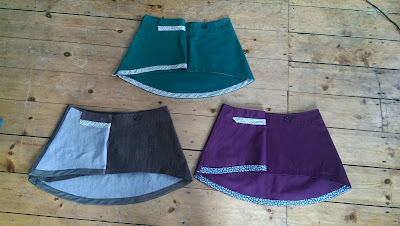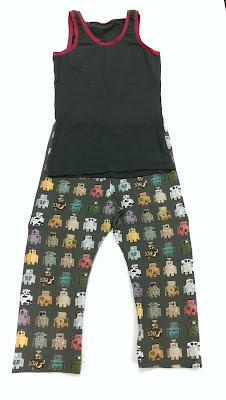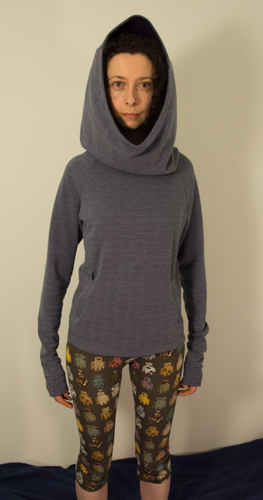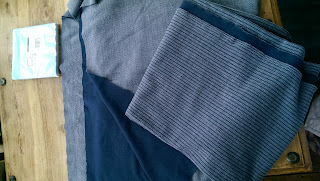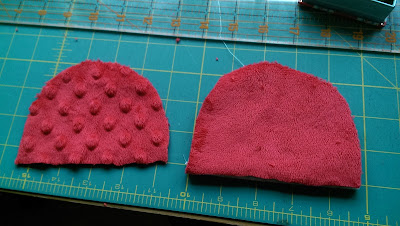Shape Shape
I revisited one of my favourite patterns from Shape Shape recently - these skirts are all made using the Apron Skirt pattern, and I've replaced the ties with some hidden buttons in the waistband facing. If I were a stickler for styling, this would be a brilliant spot for kilt pins. At the moment I'm switching out various badges/brooches/pins. The skirts are all made from scraps, and if there hadn't been hard limits on the fabric available, I'd have made these a bit longer (because they're quite breezy!).The facing and the skirt pieces are different sizes - I think this is a detail resulting from the waist ties - but I completely forgot to correct it in advance. Oh well.
Drape Drape
Like most of the sewosphere, I fell hard for the Drape Drape series of books (mostly thanks to Carolyn's beautiful versions, and very accessible introductions to the ideas in Japanese sewing books), but was proud to have abstained from buying copies in the hope that at some point they would appear in my Christmas stocking. Once the hype of the English launch had died down a little in sewing circles, I tried to look for some inspiring finished versions from other people on the internet. Some patterns have been wildly popular, though I'm not sure if this is due to their simplicity or the fact they are the closest available alternative to "normal" clothes. How can it be, that some patterns have absolutely no versions out there at all? I can only hope that some people have been making things from the book and just not sharing with the wider world - it would be a shame for a pattern to go to waste, and a bigger shame to be obliged to share everything you make with the general public.The point of this post is to offer a quick review of my experience THUS FAR with the Drape Drape books. This is because I haven't actually finished a garment yet.
Now, the book is littered with funny artsy photos that have been well documented (and recreated) elsewhere. From a "fashion photography" point of view, perhaps "Japanese pattern styling" is trying to become an artform in its own right. Perhaps it's a marketing thing - the books are instantly recognisable for their crazy poses. It's pretty much what they're famous for. That, and correcting the misconception that it's actually a set of books about draping on a stand.
I like the full page images, they're fun. But from a user's point of view, they seem inconvenient and unhelpful. Unhelpful if you're actually planning to make something. A lot of the styling is indecent. Fabric is often solidly black - which makes seeing the draped effects really tough, and the seamlines/style lines are nearly invisible as a result. Plus, the technical dress form photos are tiny greyscale thumbnails, once again with black fabric. Why?
And the tracing! Oh the tracing. At the time of writing I haven't event got to the sewing and following instructions bit.
You know I'm a pattern tracer. I cut my teeth on Burda. But I was completely unprepared for these sheets. Tracing these patterns is like someone replacing all of the clues on an OS map with the same line. Going hiking in the country? Walking 5 miles down the M4 would be a fine idea! Not sure whether that blob is a pub, a church or a military firing range? Don't worry, they've got you covered by writing what it is, roughly nearby with another indecipherable tiny line to point it out! One advantage is that they will give you some consistent information on seam allowances. They handily give you both cutting and stitching lines on the pattern, again basically in the same colour and shade.
Surely it's commonplace that (at the very least) the sizes have different shape/weight lines? No! It's all the same bloody colour and weight for all sizes! I want to cut someone some slack on this point, perhaps printing all in the same colour is to lower print costs - maybe even B&W. Why then, are the individual pattern sheets printed in different colours?
I think I found an error in the dress I was tracing as well (a notch was missing). Notches are quite important with any design, moreso with strange pattern shapes where they're important signposts in construction! Then I paused. With a pattern sheet like this HOW AM I SUPPOSED TO TELL? How can I spot and correct errors when I can't even tell what their correct stuff is!
Perhaps these were always supposed to be coffee table books. One of those fancy avant garde designs you're never supposed to make unless you're a topologist or a madman. If so, bravo. It took me 8 months to have a go at this, it might be another 8 before I get round to finishing the project...
Naturally this falls into the realms of translation theory. It's one of the most fascinating topics I've ever dipped my toes into. Whoever is responsible for all of these translated sewing books has made their choices, and I trust they've made them well. If you are interested in knowing a bit more about the subject (in 45 mins or fewer) then a recent episode of The Forum on the BBC World Service covers a lot of interesting ground on machine translation and other aspects of translation theory.
In Other News...
- I think I'm going to Japan in the spring. Does anyone have any recommendations on things to do/see? (I've already pinned Carolyn's fabric shopping guide)
- This may also mean I need to learn some Japanese
- The Threads November issue has an article on Japanese pattern books - although interesting, there seem to be quite a few points presented as universal fact, which is a bit of a sweeping generalisation for a whole industry. And some of them are very easy to dispute! If you're a Threads Insider, you can access the article online.
- I also stumbled across this BBC Documentary called Misunderstanding Japan, which explores western media representations of the country and its citizens. It covers 1800s to today and digs up a lot of old reports, like when people here were first learning about karate (the deadliest thing imaginable, where you can kill a man with one strike after years of sadistic training - now it's a fun after school activity for almost every primary school child in Britian).
That's it for now, let's speak soon!
K
